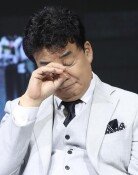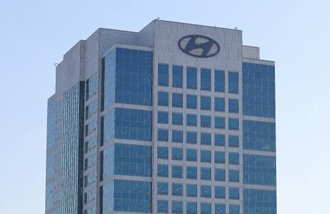The Haoi summit should not be a ‘nuclear-freeze show’
The Haoi summit should not be a ‘nuclear-freeze show’
Posted February. 27, 2019 07:38,
Updated February. 27, 2019 07:38
U.S. President Donald Trump and North Korean leader Kim Jong Un will embark on their two-day summit starting from today’s banquet. It has been eight months and a half since they met at the Singapore summit on June 12 last year. After 66 hours of train ride, Kim Jong Un arrived at Dong Dang, Vietnam Tuesday morning and transferred to a vehicle to go to Hanoi. President Trump arrived late last night on his private plane.
In the context of the atmosphere of the working-level meeting between Washington and Pyongyang that lasted for six days, it appears that the two states have come to a somewhat rough agreement on initial steps, which is the starting point of the denuclearization process. That is, they have reached a type of "small deal" that involves the seal and withdrawal of the nuclear facility in Yongbyon, which will be followed by corresponding measures such as opening a mutual contact office and declaration of the end of the Korean War. It is, however, still unclear on whether the "big deal," which completely eliminates the North's nuclear facilities as well as its nuclear fuel and weapons, will be reached. It is highly probable that this will end up as a negotiation between the two leaders.
The success or failure of the Hanoi negotiation depends on how specific and clear the agreement defines implementation actions. Even when considering the fact that the joint statement in Singapore last year was the first summit of the two leaders, it was nothing more than a theoretical agreement that could not be more ambiguous. Washington and Pyongyang are telling different stories on what "complete denuclearization of the Korean Peninsula" indicated in the statement refers to. While the United States argue that it is abolishing North Korea’s nuclear facility, nuclear fuels, nuclear warhead, and missile, North Korea is seeking South Korea’s removal from the U.S. nuclear umbrella by emphasizing the "Korean Peninsula free from nuclear weapons and nuclear threats."
The two leaders need to remove such ambiguity. If the U.S. and North Korea move on evasively by fabricating a draft even though they share different goals, it is only a matter of time until everything turns out meaningless. Furthermore, this summit will only end up in regret if compensation actions that is too large to restore such as alleviation of sanctions against North Korea in return for partial denuclearization, which means the mere suspension of additional nuclear development, for being blind sighted by immediate tangible achievements. The agreement should incorporate reversible and equivalent corresponding measures in line with the level of North Korea’s denuclearization.
The U.S.-North Korea summit in Hanoi has been realized following the one in Singapore based on Kim Jong Un’s promise on complete denuclearization. President Trump should make this sure in the agreement after repeatedly confirming Kim Jong Un’s will clearly. In the absence of such clarity, the summit cannot avoid being criticized as an "event show" regardless of emphasizing its success. Notwithstanding the fact that the two leaders have a good relationship, they should "trust yet verify." They should be friends but at the same time weigh each other. Achieving a social relationship is enough for once.







